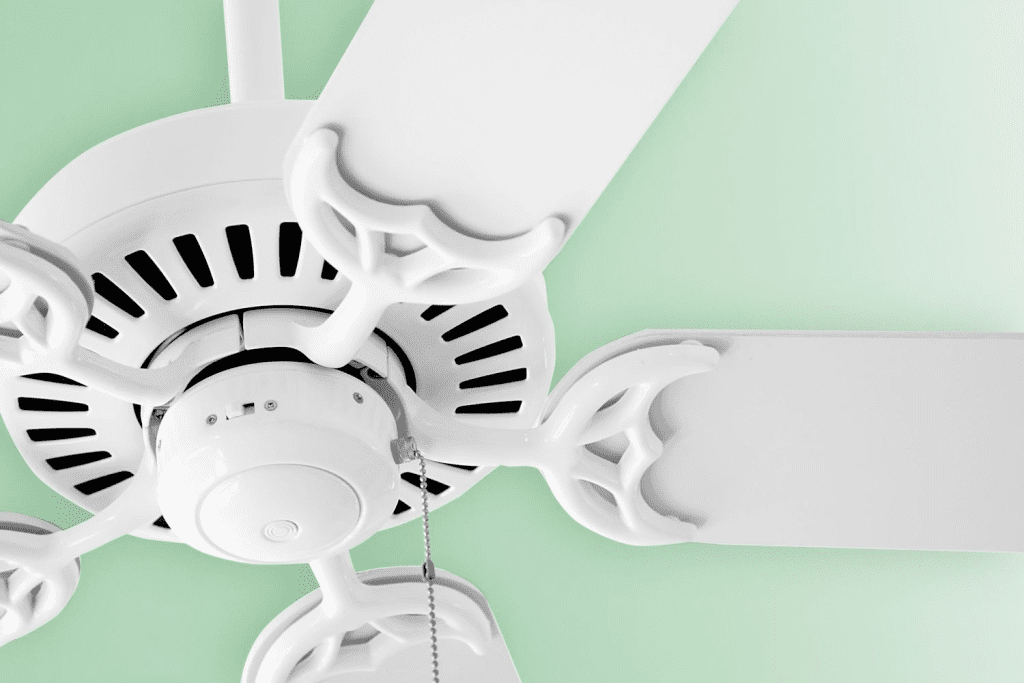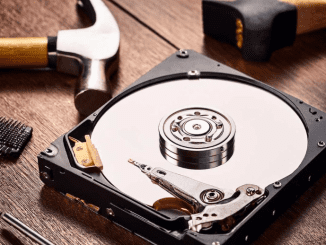Ceiling fans are essential for keeping our homes cool and comfortable, but cleaning them can feel like a hassle. Dust and dirt easily gather on the blades, creating a grimy layer that not only looks bad but also affects the quality of the air in your home. Like many people, I used to struggle with cleaning my ceiling fans until my Nana shared her genius trick with me. Now, cleaning my ceiling fans is nearly effortless, and I’m excited to share this easy method with you.

Why You Should Clean Your Ceiling Fans Regularly
Before diving into my Nana’s trick, let’s talk about why it’s so important to clean your ceiling fans regularly. Over time, dust and allergens accumulate on the fan blades. When the fan is turned on, these particles are blown into the air, which can irritate allergies and worsen respiratory conditions. Dirty fans can also affect the performance of the fan, making it less efficient at circulating air.
Keeping your ceiling fans clean not only improves the air quality in your home but also extends the life of the fan by ensuring it runs smoothly and efficiently.
The Struggle with Traditional Ceiling Fan Cleaning Methods
If you’ve ever tried to clean your ceiling fan with a cloth or duster, you know how messy it can get. Dust falls onto your furniture, floor, or even on you, leaving a bigger mess to clean up. Often, you have to climb onto a ladder or chair, which isn’t the safest method, especially if you’re trying to balance while dusting. Not to mention, traditional dusters tend to scatter dust rather than trapping it.
Luckily, Nana’s trick eliminates these problems, making fan cleaning quick, easy, and virtually mess-free.
Nana’s Brilliant Trick for Cleaning Ceiling Fans
My Nana’s secret to easy ceiling fan cleaning requires just two household items: an old pillowcase and some cleaning solution (or water). Here’s how you can tackle your dirty ceiling fan blades in no time:
What You’ll Need:
- An old pillowcase (one you don’t mind getting dirty)
- A step stool or ladder (if necessary)
- A spray bottle with water or a mild cleaning solution (optional)
Step-by-Step Guide to Nana’s Ceiling Fan Cleaning Method
- Prepare the Pillowcase: Take an old pillowcase and lightly spray the inside with a little water or a mild cleaning solution. You don’t want it soaking wet—just damp enough to attract the dust instead of letting it fly into the air.
- Position Yourself Safely: If your fan is high up, use a stable step stool or ladder to reach the blades safely. Ensure that the stool or ladder is positioned securely to avoid any accidents.

- Slip the Pillowcase Over the Blade: Slide the pillowcase over one of the fan blades so that the entire blade is inside. The opening of the pillowcase should be at the base of the blade, where it connects to the fan.
- Wipe the Blade: Once the pillowcase is in place, press the fabric gently around the blade. As you pull the pillowcase back toward you, it will wipe both the top and bottom of the blade, trapping the dust inside the pillowcase.
- Repeat for Each Blade: Continue the process for each fan blade. If your pillowcase gets too dusty, you can shake it out outside or switch to another pillowcase.
- Dispose of the Dust: After all the blades are clean, take the pillowcase outside, turn it inside out, and shake out the dust. Once it’s empty, toss the pillowcase in the washing machine for a thorough clean.
Why This Trick Works So Well
Nana’s method is effective for several reasons. First, it captures the dust inside the pillowcase, preventing it from falling onto your furniture or floor. The damp fabric helps trap the dust instead of allowing it to scatter into the air, which is a common issue with dry dusters. The pillowcase also allows you to clean both sides of the blade at once, saving time and reducing the need for multiple passes.

Another bonus? The soft fabric of the pillowcase won’t scratch your fan blades, ensuring they stay in top condition. It’s a win-win for both cleanliness and fan maintenance.
Additional Tips for Keeping Your Ceiling Fans Dust-Free
While Nana’s trick is great for deep cleaning, there are a few more tips you can follow to keep your ceiling fans dust-free in the long run.
Regular Cleaning Is Key
To prevent thick layers of dust from building up, clean your ceiling fans once a month. Regular maintenance makes the cleaning process faster and easier each time.
Use a Microfiber Cloth for Spot Cleaning
In between deep cleans, you can use a microfiber cloth to quickly wipe down the blades. Microfiber is excellent at trapping dust and preventing it from spreading. A quick wipe once a week can go a long way in maintaining a dust-free fan.

Consider Using Dust-Repellent Sprays
After cleaning your fan, you can apply a dust-repellent spray to the blades. These sprays help reduce the amount of dust that sticks to surfaces, so your fan will stay cleaner for longer.
Reverse Your Fan Direction in Winter
Many ceiling fans come with a reverse mode, which is useful in the winter for pushing warm air down from the ceiling. Before switching directions, give the fan a quick clean to avoid sending dust into the air when you reverse the spin.
Maintain a Dust-Free Home Environment
Reducing the overall dust in your home can help keep your ceiling fans clean. Regularly vacuuming, dusting, and using air purifiers can minimize the amount of dust that settles on your fan blades.
Conclusion: Keep Your Ceiling Fans Clean with Minimal Effort
Cleaning ceiling fans doesn’t have to be a dreaded chore. With my Nana’s clever pillowcase trick, you can make the process quick, easy, and mess-free. Not only will your fans look better, but your home will also feel fresher, and you’ll enjoy better air quality. By incorporating regular cleaning into your routine and following these additional tips, you can ensure that your ceiling fans remain dust-free and efficient.
So next time you look up at those dusty fan blades, grab an old pillowcase, and give Nana’s method a try—you’ll be amazed at how effective it is!


